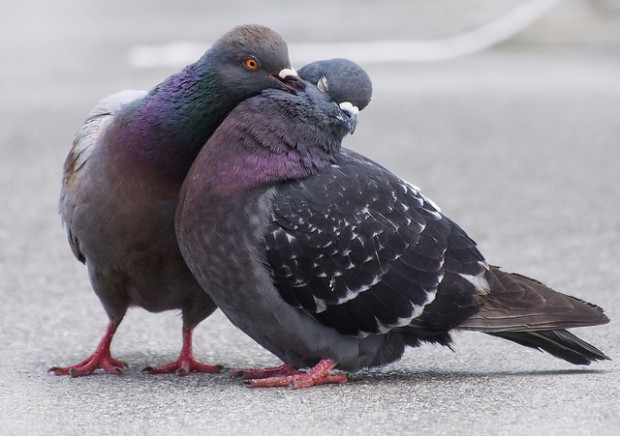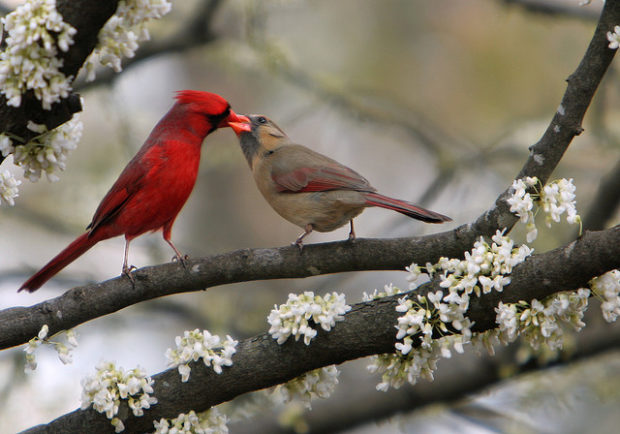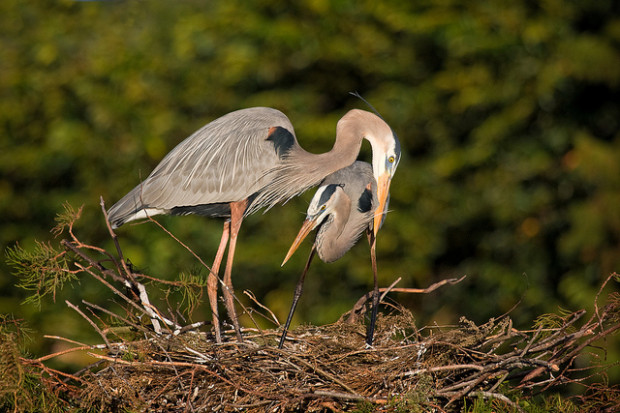We have much more to do and your continued support is needed now more than ever.
Love is in the Air: Courtship Behavior in Backyard Birds
February is the month of love, and not just for those who celebrate with a Valentine’s Day card and a box of chocolates. As spring approaches you may be observing some interesting behaviors exhibited by your backyard birds.
Why do birds use courtship behavior?
Courtship behavior is primarily used to attract a receptive mate. Birds will perform a variety of displays in order to demonstrate strength and health. This allows for the potential mate to ensure that they are selecting the best of the best! Once a potential mate has been established, these strange behaviors can also let suitors know that their mate is spoken for.
Types of courtship
Singing: This ritual is by far the most noticeable behavior exhibited by birds come spring. The intricacy and variety of song shows a potential mate the degree of maturity and intelligence. Males will often be seen singing to attract the attention of a female.
Pay close attention to the song. Do you notice a difference between the song heard in winter as opposed to that in spring? Compared with any other time of the year, songs heard during breeding season tend to differ in complexity and length.

Males can sometimes be seen in a group engaging in competitive displays to perhaps entice a female. There are specific species, such as the Greater Sage Grouse, that take part in these displays which is known as lek mating.
Touching and Preening: While most bird species preen their feathers several times a day to keep them healthy, preening can also be used in courtship. Mutual preening or allopreening is used in courtship to bond mating pairs.
You also may notice your backyard birds simply perched closely next to each other, perhaps leaning somewhat on their mate. It may seem modest, but some species show their affection by a simple touch or lean.
























